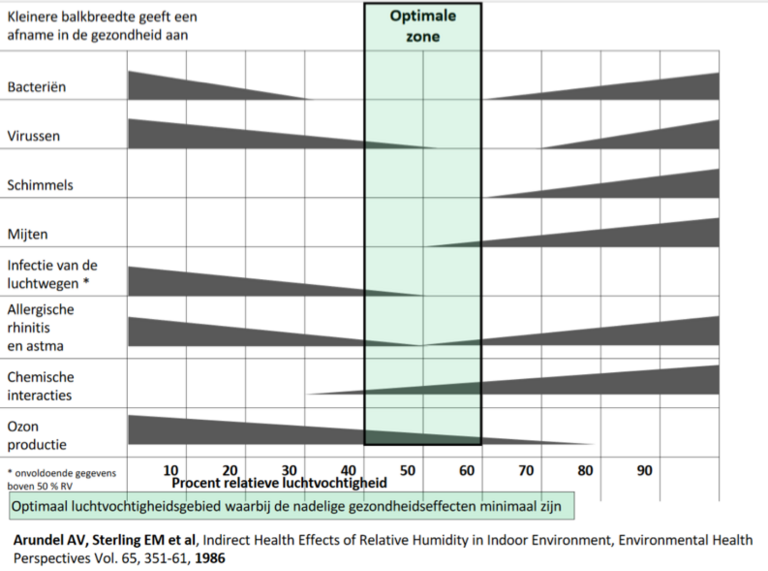Is your humidification system still adequate?

As experts in the field of healthy indoor climate, we increasingly encounter situations in which humidification systems are not optimally equipped or even completely fail to meet today's standards for a healthy indoor climate. With the article below, we explain a number of situations.
In winter, saturated exhaled air in contact with the cold mucus in our nose causes condensation which is characterized by the phenomenon of a runny nose. In a warm dry environment, the inhaled air causes evaporation at the upper respiratory tract, which is in no way compensated by the exhaled air causing the respiratory tract to dry out. Dry mucous membranes limit filtration capacity partly because the cilia on the mucous membrane lose their action, allowing viruses and bacteria to penetrate deeper while simultaneously drying out the bronchi and reducing the barrier against infection.
Bacterial or viral infections of the respiratory tract come from the presence of infected persons who simply spread the viruses and bacteria through sneezing, coughing or simply talking. We have long known that low humidity can quickly shrink the dispersed droplets to the size of an aerosol that can be easily inhaled and penetrate deep into our respiratory tracts. Different studies on the effect of relative humidity on the harmfulness of viruses and bacteria lead to different conclusions depending on the virus or bacteria being studied. For example, Escherichia coli is least harmful at rv between 70 and 80% than above or below. Legionella pneumophila, however, between 50 and 60%
In any case, at an rv of 65% which is favorable for bacteria, only 20% are still active after an hour. The flu virus, on the other hand, survives 10 times longer at an rv below 40%.
In summary, the combination of dehydrated respiratory tracts combined with rapid evaporation of aerosol-sized droplets that penetrate deeper into the dehydrated respiratory tract contribute to making people sick and spreading viruses and bacteria. Also, at a relative humidity above 50%, there is no area which is better or worse to reduce the activity or life span of these microorganisms.
It is therefore important to keep the relative humidity in a working environment at a value between 40% and 60% and it is therefore good this period to take a look at whether your humidification system is still adequate. We would be happy to help you in this process and examine with you, now that it is starting to get colder and the absolute humidity is dropping, whether your current systems still meet the requirements. Contact us today for a no-obligation humidification consultation.


